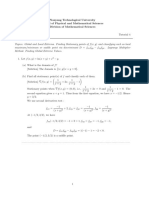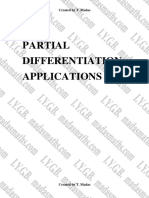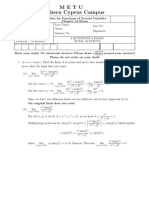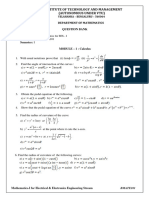0% found this document useful (0 votes)
44 views5 pagesUnit 2 Tutorials
This document contains tutorials on limits, continuity, partial derivatives, maxima, minima and saddle points. It includes 20 problems on partial differentiation with solutions and 22 problems on limits and continuity. It also contains 6 problems on finding maxima, minima and using Lagrange multipliers with solutions.
Uploaded by
7csnty5wvgCopyright
© © All Rights Reserved
We take content rights seriously. If you suspect this is your content, claim it here.
Available Formats
Download as PDF, TXT or read online on Scribd
0% found this document useful (0 votes)
44 views5 pagesUnit 2 Tutorials
This document contains tutorials on limits, continuity, partial derivatives, maxima, minima and saddle points. It includes 20 problems on partial differentiation with solutions and 22 problems on limits and continuity. It also contains 6 problems on finding maxima, minima and using Lagrange multipliers with solutions.
Uploaded by
7csnty5wvgCopyright
© © All Rights Reserved
We take content rights seriously. If you suspect this is your content, claim it here.
Available Formats
Download as PDF, TXT or read online on Scribd
/ 5






















































